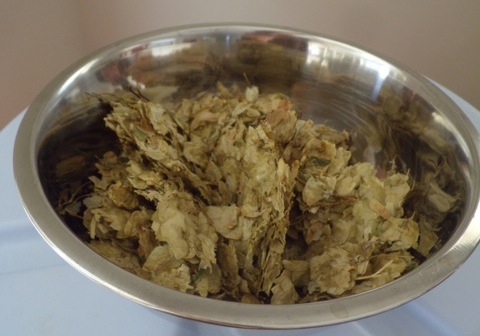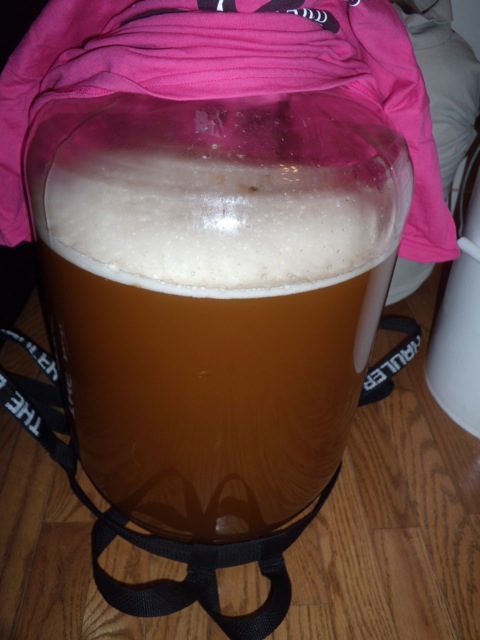A few weeks ago I recieved a copy of Mitch Steele’s IPA: Brewing Techniques, Recipes and the Evolution of India Pale Ale. While a significant portion of the book is dedicated to the history of British brewing and IPAs, there are a number of recipes in the back of the book. These recipes are not only for historic IPAs, but also modern IPAs, including double and black variations.
I found that the historic sections of the book, as well as the historic recipes were most interesting, largely due to how insanely hoppy the IPAs of the 1700s and 1800s were. You have to wonder about a hoppy beer being aged in oak for 1-3 years, and still being hoppy — that’s a lot of hops in the beer.
I’ve had a stockpile of Fuggles for a while, and was wondering what to do with them (they aren’t exactly my favorite hop variety), when I stumbled upon a recipe in the book that uses a massive amount of hops — 1.54oz/gallon in the boil, and 0.25oz/gallon dry hopped, for a total of 120 IBUs in a 5.8% beer. Additionally, the grain bill is just British pale malt.
From IPA: Brewing Techniques, Recipes and the Evolution of India Pale Ale
“This is a moderate strength ale with a heavy dose of hops…. each recipe varies a bit, but this one epitomizes the theme. A single malt. A single hop. This beer is decidedly different from the ones to come later in the century. The hop flavor is truly through the roof. At nearly 5 pounds per barrel at a moderate gravity, saying this is hoppy is an understatement.”
Tasting notes: “Herby, hay-ey, grassy; ladyfingers crawl through the hop mist. Thoroughly, rippingly hoppy. Hops. More hops. Hop resins. Very long, dry, and crisp finish leaves a touch of malt sweetness shellacked and varnished with hops. Delicious hop burps. Hmmmmmmm…… hoppy.”
I did some calculations assuming loss in the kettle due to all the hops, as well as dry hopping, and also due to the fact that my Fuggles were lower alpha than what the book assumes, and so my recipe had slightly more hops than what I initially calculated.
Recipe: Fuggle IPA
Style: 14A-India Pale Ale(IPA)-English IPARecipe Overview
Wort Volume Before Boil: 8.75 US gals
Wort Volume After Boil: 6.50 US gals
Volume Transferred: 6.50 US gals
Volume At Pitching: 5.50 US gals
Expected Pre-Boil Gravity: 1.042 SG
Expected OG: 1.057 SG
Expected FG: 1.014 SG
Expected ABV: 5.7 %
Expected ABW: 4.5 %
Expected IBU (using Tinseth): 122.5
Expected Color: 5.2 SRM
Apparent Attenuation: 75.0 %
Mash Efficiency: 75.0 %
Fermentation Temperature: 68 degFFermentables
UK Pale Ale Malt 13lb 5oz (100.0 %) In Mash/SteepedHops
UK Fuggle (4.0 % alpha) 4.50 oz Loose Pellet Hops used First Wort Hopped
UK Fuggle (4.0 % alpha) 4.00 oz Loose Pellet Hops used 30 Min From End
UK Fuggle (4.0 % alpha) 4.00 oz Loose Pellet Hops used 15 Min From End
UK Fuggle (4.0 % alpha) 2.00 oz Loose Pellet Hops used Dry-HoppedYeast: Wyeast 1028-London Ale
Mash Schedule
Mash Type: Full Mash
Step: Rest at 156 degF for 60 mins
As per my usual MO, the 60 minute hops went in as first-wort hops, and in this photo, you can see the boil trying to break through the cake of hops floating at the top. Keep in mind this is only 33% of the kettle hops.
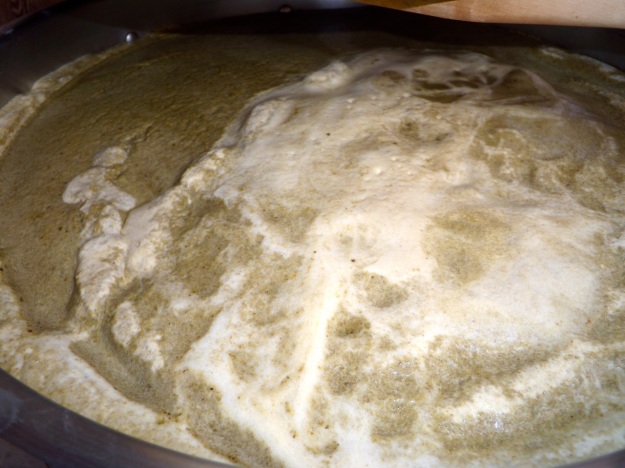
I’m glad that I scaled up the recipe, because there was a lot of hop goo at the bottom of the kettle, and I also had a massive blowoff during fermentation. It’s about 3 days from going into the keg, and I can’t wait to see what it tastes like.

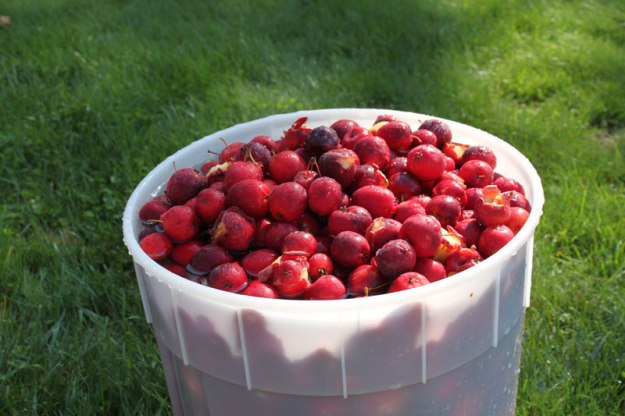

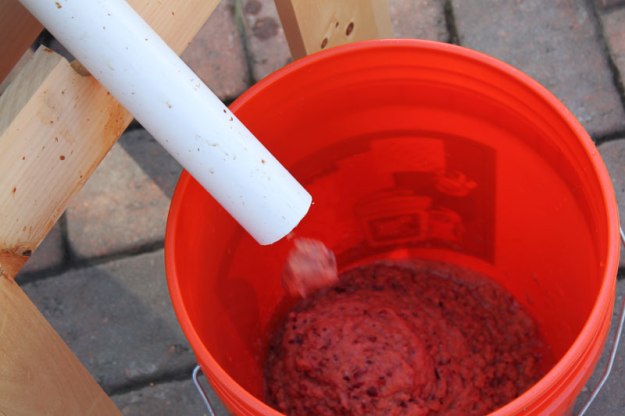
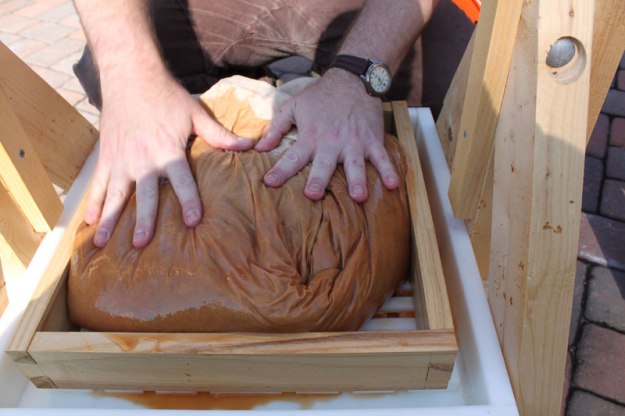
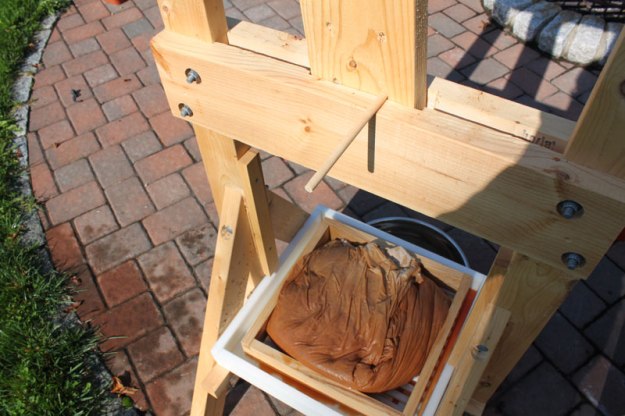
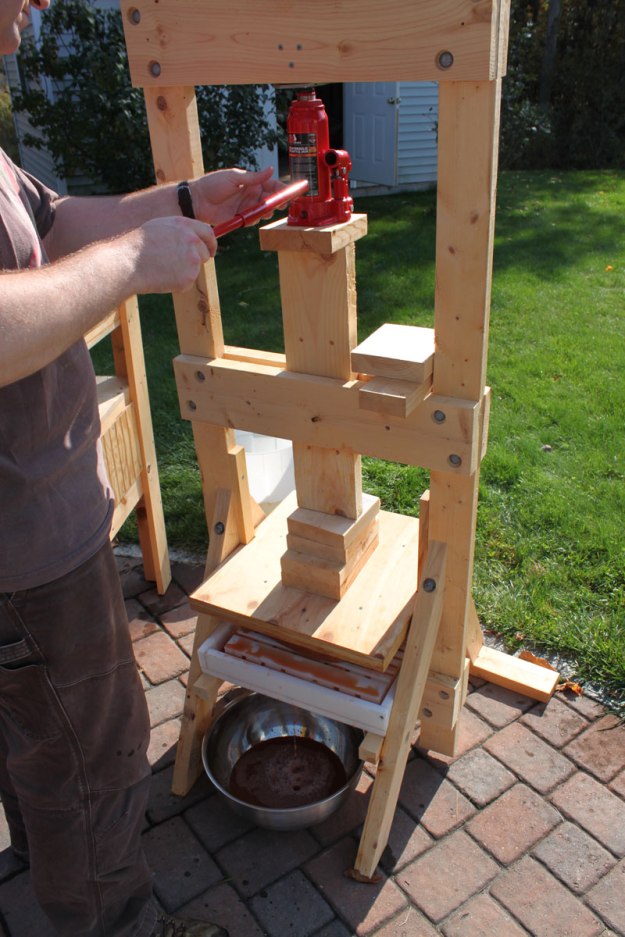
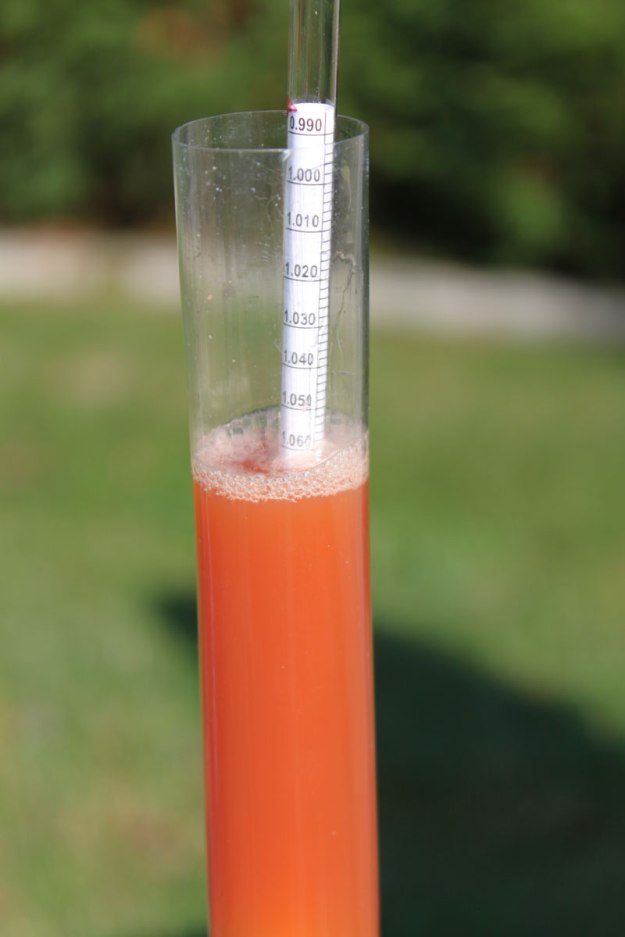
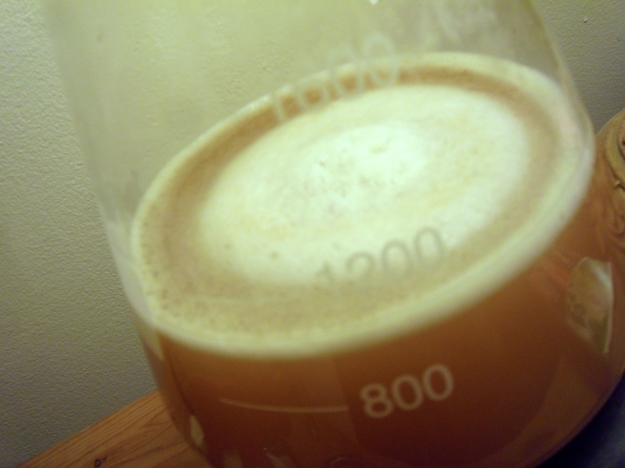
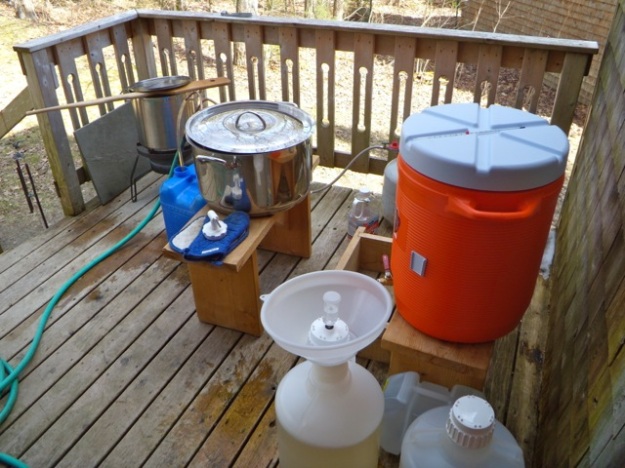 This past Saturday, I brewed two batches in a single day, back to back. While this did make for a very long day, I was able to gain some overlap without any additional equipment.
This past Saturday, I brewed two batches in a single day, back to back. While this did make for a very long day, I was able to gain some overlap without any additional equipment. I told myself initially that I just had to wait until New Year’s to keg it, then it became the end of January. Now, here it is, nearly April, and it’s still in the primary fermenter. Interestingly, in just the past month or two, it’s taken a significant turn visually. Vinnie Cilurzo of Russian River has said that you shouldn’t look at a sour beer while it’s fermenting, but isn’t that curiosity part of what brought homebrewers to the hobby in the first place?
I told myself initially that I just had to wait until New Year’s to keg it, then it became the end of January. Now, here it is, nearly April, and it’s still in the primary fermenter. Interestingly, in just the past month or two, it’s taken a significant turn visually. Vinnie Cilurzo of Russian River has said that you shouldn’t look at a sour beer while it’s fermenting, but isn’t that curiosity part of what brought homebrewers to the hobby in the first place?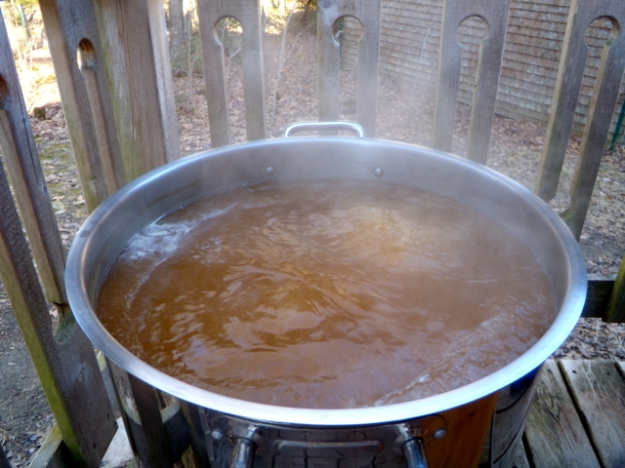 For the hop bill, I opted to try a hop-bursting technique, which consisted of only a 20 minute, 5 minute and flameout addition. Despite the low utilization rate on these hops, they were all high-alpha hops (Nugget and Columbus), so I was able to achieve a respectably high bittering ratio with no more than an ounce at each addition.
For the hop bill, I opted to try a hop-bursting technique, which consisted of only a 20 minute, 5 minute and flameout addition. Despite the low utilization rate on these hops, they were all high-alpha hops (Nugget and Columbus), so I was able to achieve a respectably high bittering ratio with no more than an ounce at each addition. This post is long overdue, but needed to be written. The weekend immediately following Lambic #1, I prepped a second wort for a sour pitch. I had an ECY20 pitch sitting in the fridge that needed to be put to work.
This post is long overdue, but needed to be written. The weekend immediately following Lambic #1, I prepped a second wort for a sour pitch. I had an ECY20 pitch sitting in the fridge that needed to be put to work.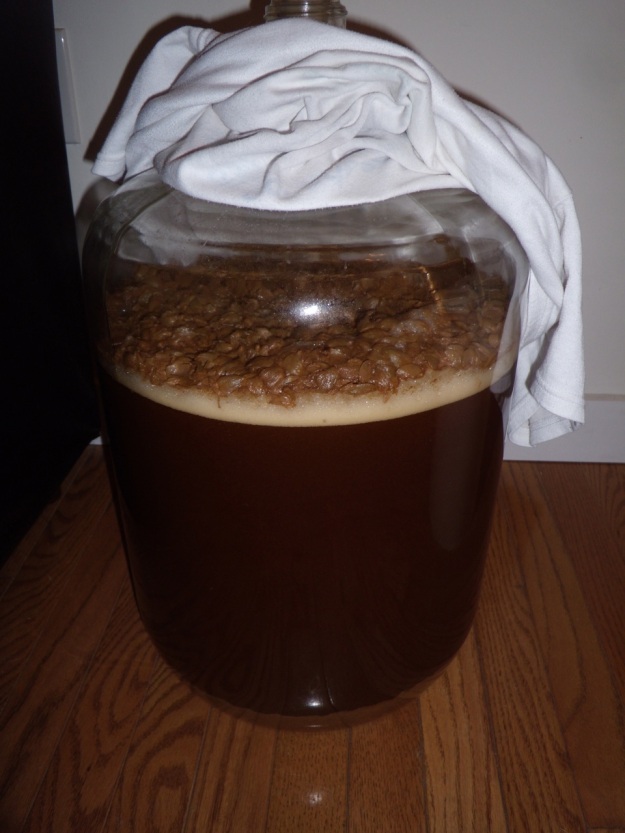 After some serious waffling and consulting, I decided to brew a darker wort than the first lambic, and also to give it a little more food. I still followed the turbid mash technique, and used a good bit of unmalted wheat. What I’m hoping for is a wort profile similar to an Oud Bruin, but with a much more complex flavor profile due to the microorganism cocktail from Easy Coast Yeast.
After some serious waffling and consulting, I decided to brew a darker wort than the first lambic, and also to give it a little more food. I still followed the turbid mash technique, and used a good bit of unmalted wheat. What I’m hoping for is a wort profile similar to an Oud Bruin, but with a much more complex flavor profile due to the microorganism cocktail from Easy Coast Yeast.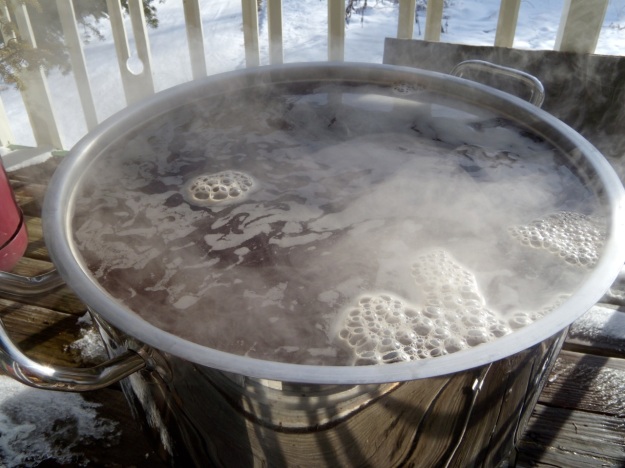 I filled my brew kettle to the rim as with the previous batch, and there was so much wort that I actually needed to boil it down some before I could add all the second runnings. Partly why I got such a high efficiency, but also makes for a really long boil (and uses a lot of propane).
I filled my brew kettle to the rim as with the previous batch, and there was so much wort that I actually needed to boil it down some before I could add all the second runnings. Partly why I got such a high efficiency, but also makes for a really long boil (and uses a lot of propane).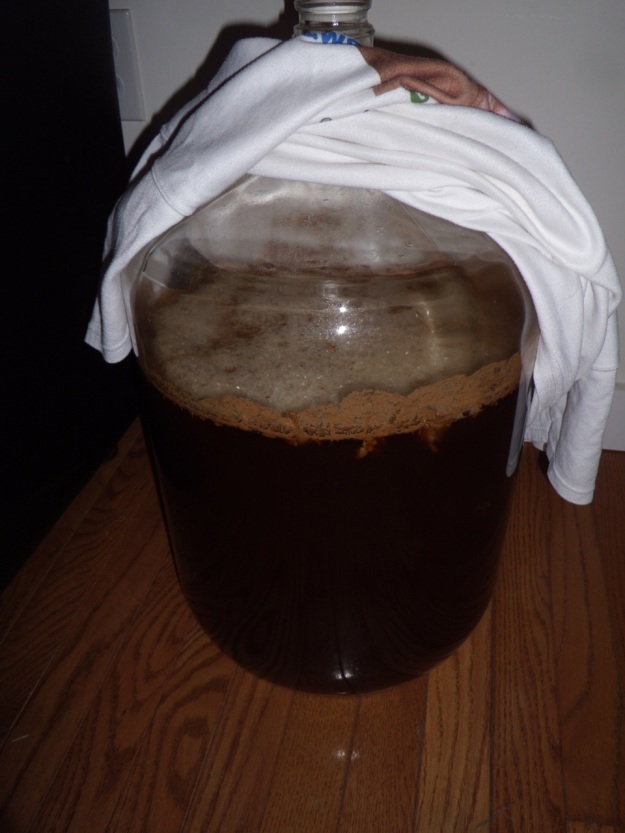 The primary fermentation happened fairly quickly, and there’s now some lingering bubbles on the surface, along with a very barnyard-y smell from the airlock. Time to put it away and forget about it for a good, long while. I will be adding oak in a couple of months, but there’s really no rush on that at all.
The primary fermentation happened fairly quickly, and there’s now some lingering bubbles on the surface, along with a very barnyard-y smell from the airlock. Time to put it away and forget about it for a good, long while. I will be adding oak in a couple of months, but there’s really no rush on that at all.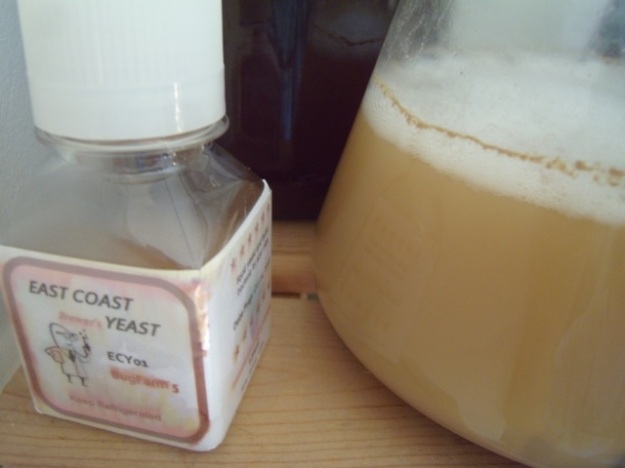 There are many ways to get a souring culture, one of the most common is to buy a bottle of lambic beer that isn’t pasturized, and grow up a culture from the bottle dregs. I went a different route, largely due to the overwhelming popularity of the results. I bought a pitch from
There are many ways to get a souring culture, one of the most common is to buy a bottle of lambic beer that isn’t pasturized, and grow up a culture from the bottle dregs. I went a different route, largely due to the overwhelming popularity of the results. I bought a pitch from 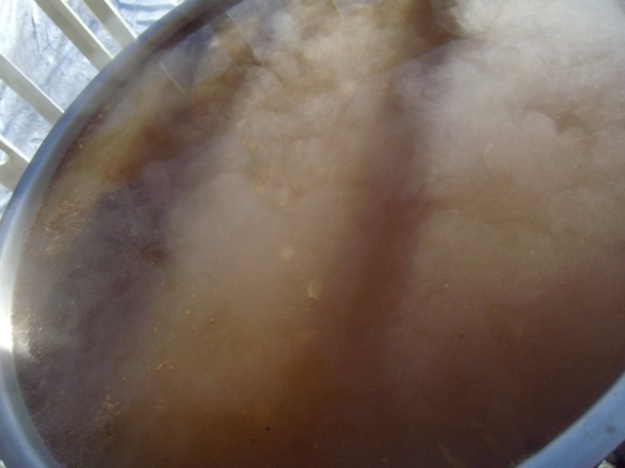 The boil is where this really becomes a drag. Due to the high volume of water used in the mash process, you end up with a 9-10 gallon pre-boil volume, which can take a really long time to boil down. I have a Bayou Country propane burner, and it took me about 4 hours to get to my final volume.
The boil is where this really becomes a drag. Due to the high volume of water used in the mash process, you end up with a 9-10 gallon pre-boil volume, which can take a really long time to boil down. I have a Bayou Country propane burner, and it took me about 4 hours to get to my final volume.